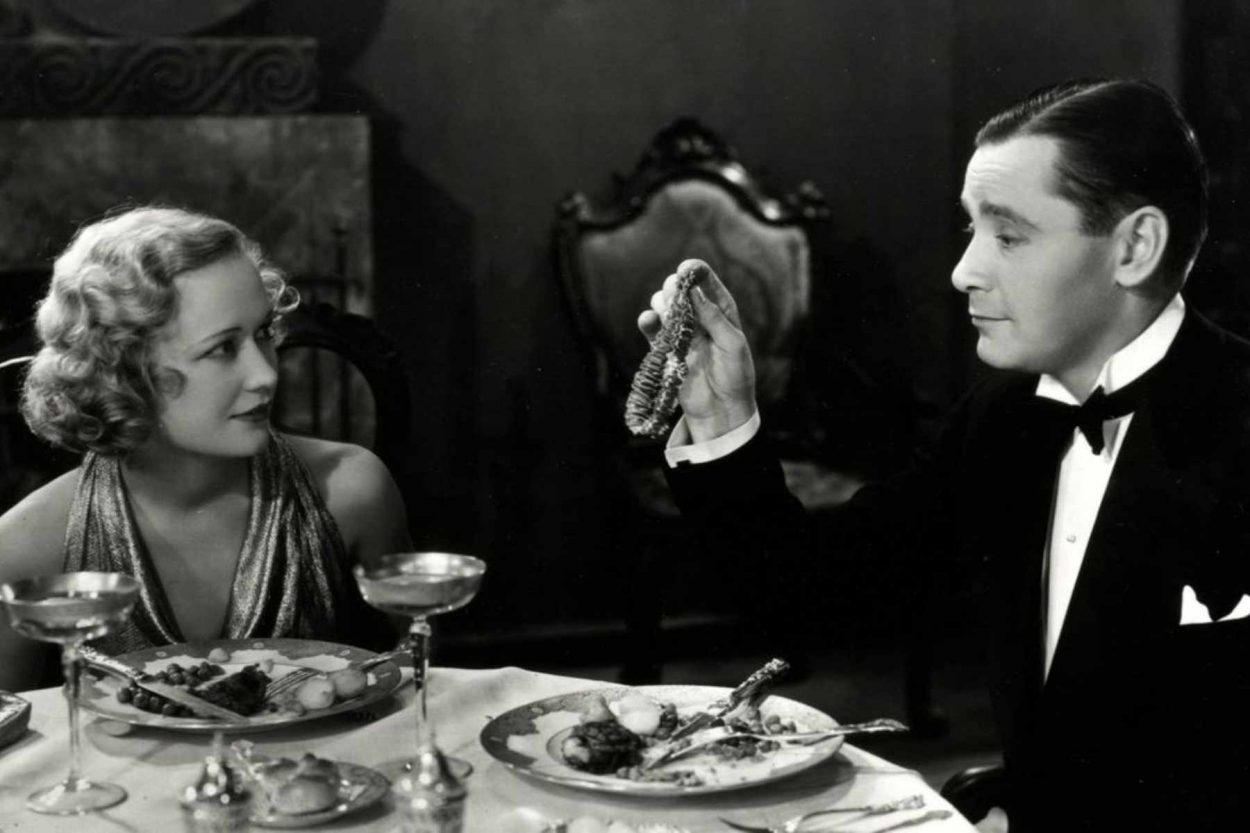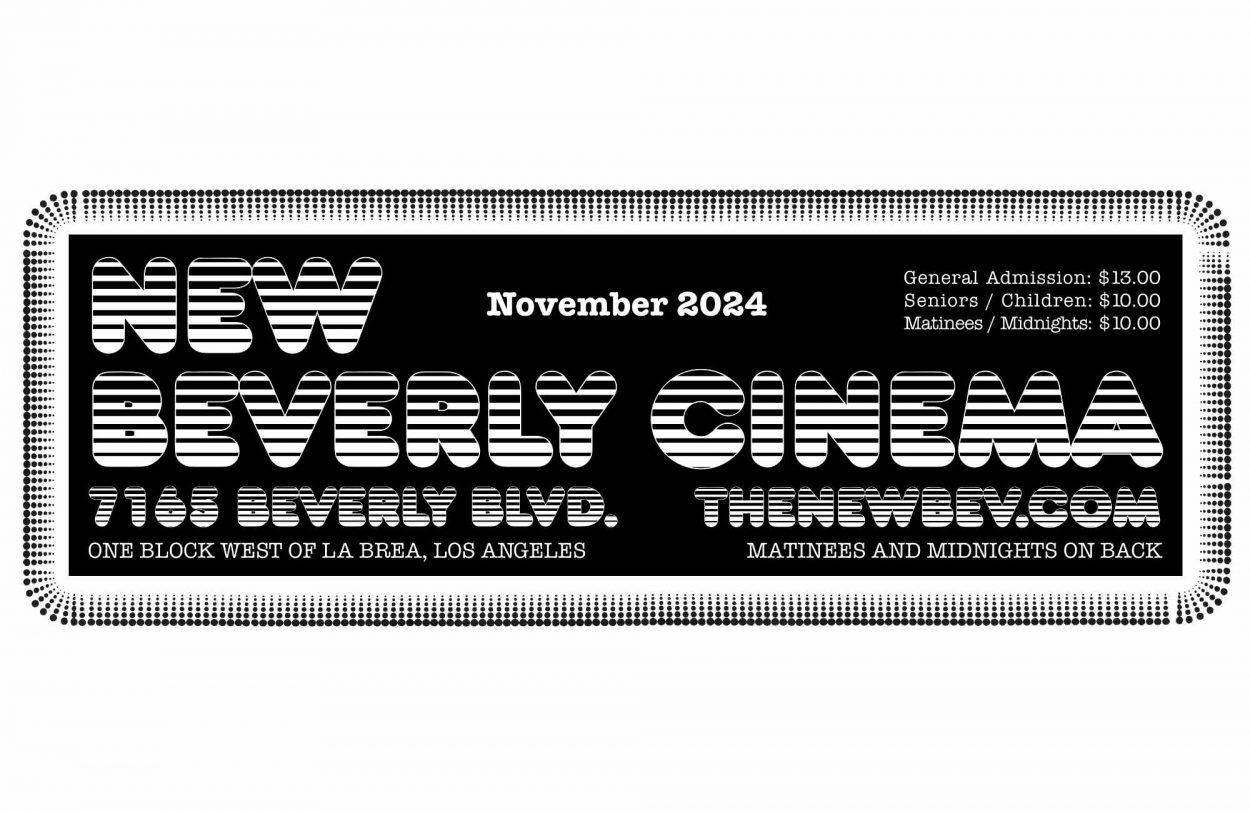Red Beard is the culmination of the largest and most important part of Akira Kurosawa’s career. From his earliest directed feature, Sanshiro Sugata (1943), Kurosawa showed his natural talent at sculpting features that blended supremely crafted visuals, meticulous and playful plotting, and a sense of class consciousness that elevated jidaigeki and crime cinema to art, with a few dramas mixed in between. And this was all done with a sense of humanity that teetered constantly between disdain for society and a love for all humans. Red Beard marks a clear end of this era of Kurosawa’s style and storytelling. It was his first partially independently financed feature, his last feature in black and white, and his last feature with the legendary star Toshiro Mifune.
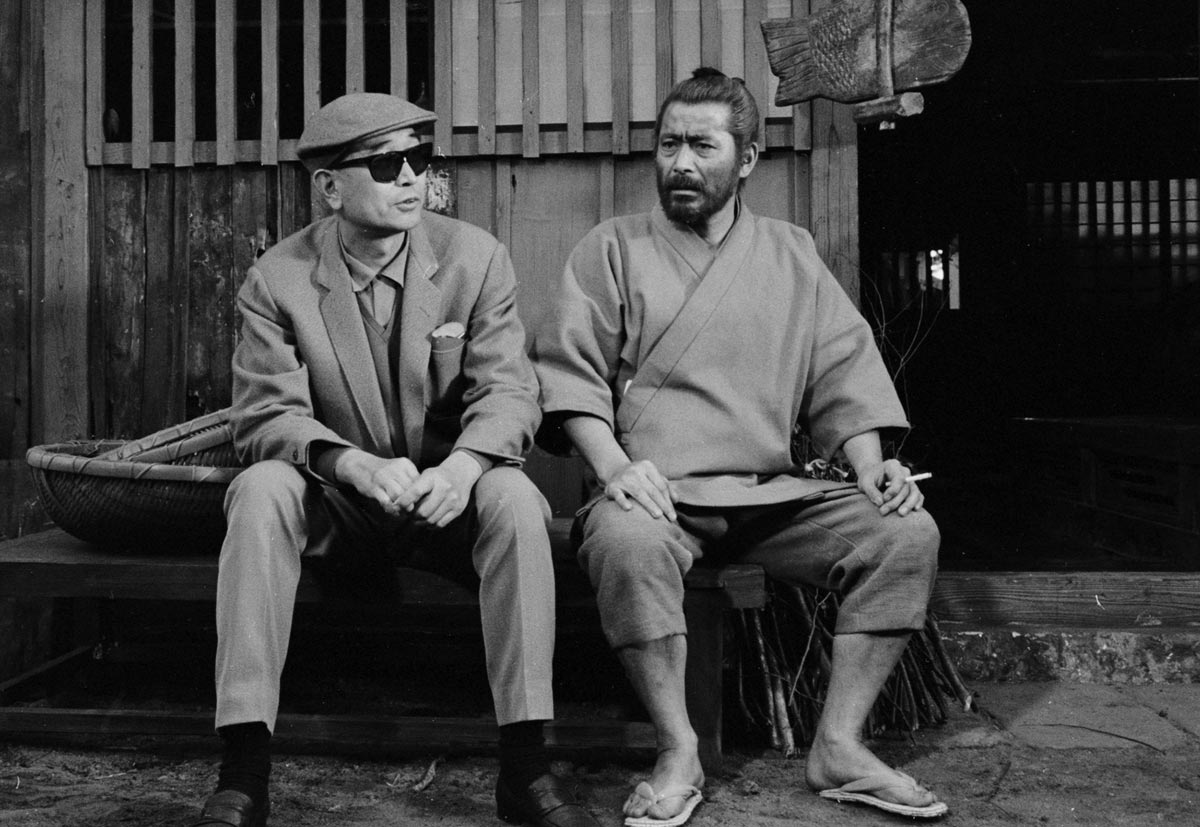 Akira Kurosawa with Toshiro Mifune on the set of Red Beard
Akira Kurosawa with Toshiro Mifune on the set of Red Beard
Noburo Yasumoto (Yuzo Kayama) is a doctor who’s sent to the Koishikawa Public Clinic to pay respects to his father’s close friend and the clinic’s head, Dr. Kyojo Niide (Toshiro Mifune, who also goes by the titular nickname of Red Beard). Noburo has spent the last several years studying Dutch Medicine, implying Red Beard takes place sometime toward the end of the Edo period, and is now looking to become a doctor. When he arrives, he’s given a tour of the facilities and is shocked by Red Beard’s stern rules for the staff and patients, all with Noburo’s sense of abject apathy at the lower classes. In Kurosawa’s typical economic plotting, while Noburo is touring the facilities, we too get to know the patients, the doctors, the housekeeping staff, and the gorgeously constructed clinic set where most of Red Beard will take place. The elaborate, historically accurate set stretched the film’s epic two year filming schedule, angering star Mifune who could not take on other roles due to the requirement to keep his facial hair. When Noburo finally meets Red Beard, he’s horrified to be told that he will no longer have the expected position of the shogun’s personal doctor, but will instead become another doctor at Koishikawa Clinic.
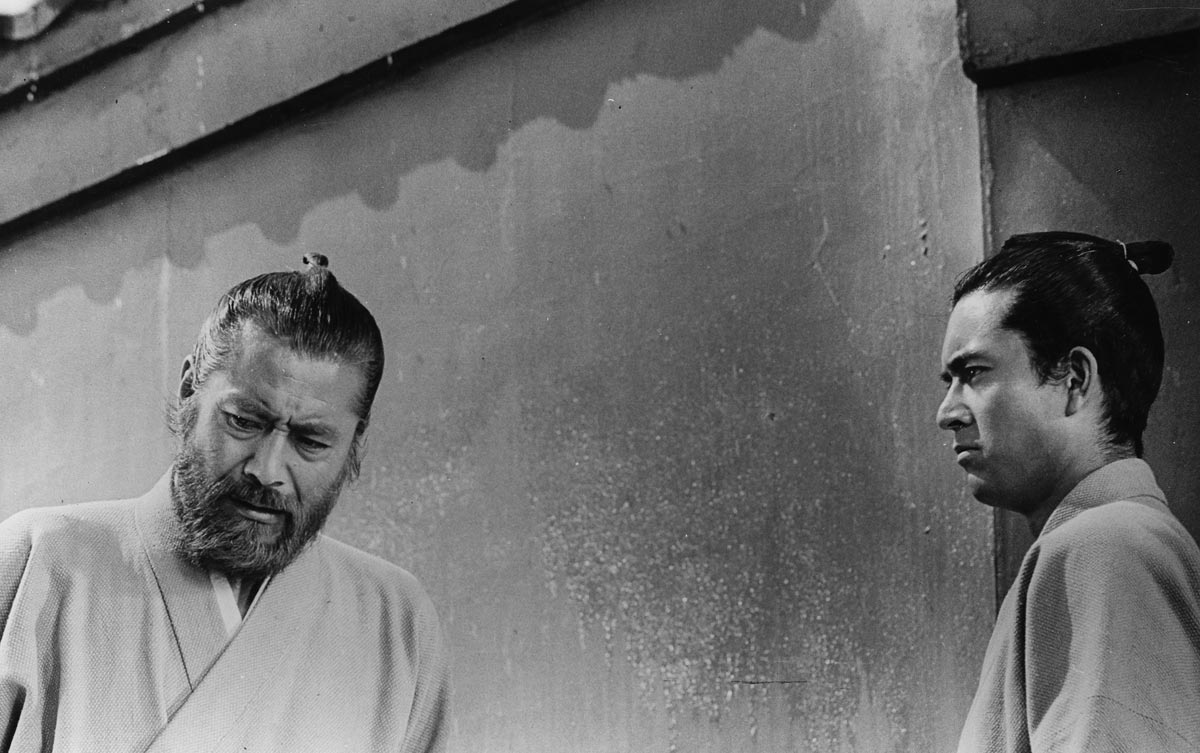
In selfish rebellion, Noburo breaks every hospital rule to get let go. He drinks on the job, refuses to wear his uniform and acts like a brat to all staff. His ego prevents him from being useful and is convinced Red Beard concocted the scheme to steal his knowledge of western medicine. But, suddenly, a mentally ill patient, known to the staff as the Mantis, enters his room after breaking out of her private quarters. Kurosawa’s command of the wide Tohoscope frame is in full use as the scene unfolds mostly in a 5 ½ minute long take. The Mantis slowly reveals her state of mental health, her history of being sexually abused and the justifiable murders she committed, all as she circles Noburo with sexual tension. The shot goes from a wide and gets tighter and tighter as the Mantis pulls Noburo in closer until she’s literally wrapped around him, attempting to kill him with a hairpin to the throat. He’s saved last minute and off-camera, cutting away from any cinematic heroics and instead highlighting Noburo’s naivete and shame.
But Noburo’s ultimate transformation comes from the tragic deaths of Rokusake and Sahachi. Rokusake is a mysterious man who can’t speak or move while he’s on the brink of death. All that’s known about him is from his previous medical records. Noburo is assigned to take care of him at the man’s last moments as Red Beard feels it’s the best way to understand what being human is. Shortly after he dies, Noburo walks into a conversation between Red Beard and Rokusake’s estranged daughter, who’s heartbroken after hearing about her father’s death. Noburo is weak as all he can do is look on as Red Beard consoles her, offers her financial support, and a place she and her sons can stay.
Immediately after, Sahachi, a beloved patient who tries to achieve some type of karmic retribution by helping the other patients, becomes severely ill and is near death due to over-working. In his dying moments, the film flashes back as Sahachi requests Noburo to hear his tragic past so he can enter the afterlife without any secrets. In a strained whisper, Sahachi tells the story of his wife who disappeared after a massive earthquake and the tragic end that befalls them when they reunite. Influenced by Kurosawa’s experience with the Great Kanto Earthquake of 1923, the earthquake sequence feature is enormously chaotic, replete with fiery sets and collapsing buildings with a stench of death.
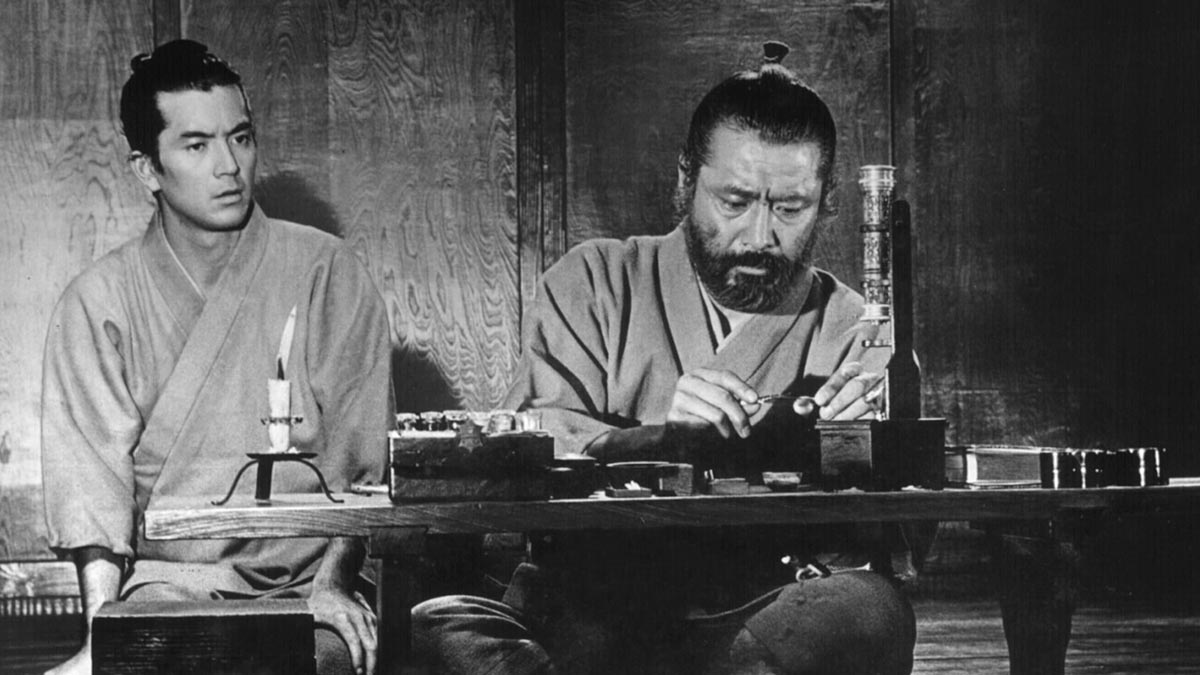
Kurosawa and his team of writers use each of their films as an opportunity to play with narrative and structure. His most famous international hit, Rashomon (1950), played with the idea of perspective by telling the same story multiple times from the points of view of each character. Each version omits, retells or misconstrues facts that contradict one another and builds a tense narrative through repetition. Kurosawa’s feature previous to Red Beard, High and Low (1963), is split between two halves. The first half is a tense drama of decision as Mifune’s character, Kingo Gonda, has to make the decision to either sacrifice his self-made financial security or save the life of a kidnapped child. The second half changes character focus completely and suddenly becomes a police procedural led by Chief Detective Tokura (Tatsuya Nakadai), culminating in a queasy moment that offers no real solutions. Red Beard would be the first of the episodic features that Kurosawa would continue to explore with Dodeskaden (1970) and Dreams (1990). Though, those two later features were mostly built around separate, more elliptical narratives that were connected to one another through loose threads, Red Beard’s moments still revolve around Noburo and how these experiences with the world change him. As Sahachi’s tale takes the film into a flashback, the film plays around with perspective for a moment as it incorporates someone else’s flashback into Sahachi’s flashback.
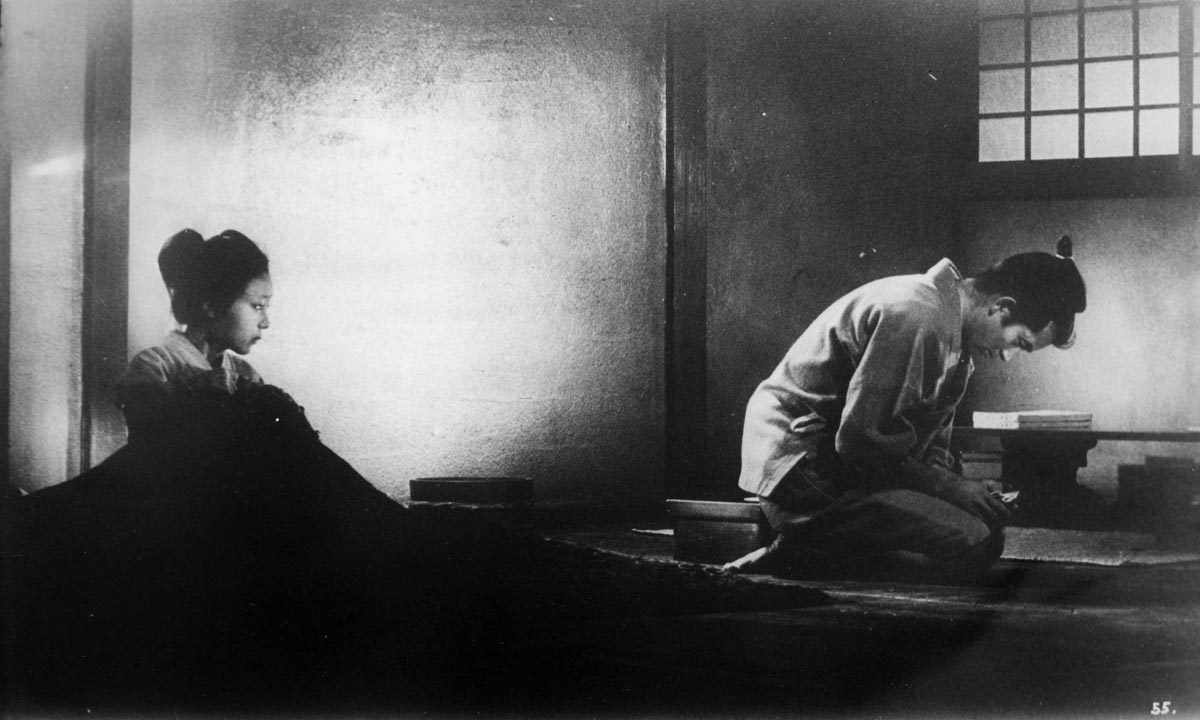
Through the deaths of respected and loved people, Noboru finally understands the importance the clinic provides to the public and finally begins to wear the clinic’s uniform while he and Red Beard make a house call to the local magistrate. The foolish, obese official sits on the floor with a swollen face, struggling to breath, as Red Beard tells him why he’s sick. Unlike the disease of the poor which is airborne, circumstantial, or genetic, the official is sick because of his life of decadence and laziness. Red Beard angrily lays into him the lifestyle changes he must make without hiding any of his contempt for him, even going as so far to criticize his physical weakness. And to finish off with a sting, Mifune charges the man an exorbitant amount that he would never charge to any of his regular patients.
Toshiro Mifune’s performance as Kyojo Niide is the antithesis of the persona he created and popularized with Kurosawa. That carnal, animalistic, even slovenly brute of his previous features is replaced by a sophisticated, wiser man who shares none of the temper of his infamous bodyguard from Yojimbo (1961). As Mifune walks into a brothel to remove and treat a prostitute infected with syphilis, he gets entangled in helping a teenager, Otoyo, who’s being violently beaten for refusing to go into prostitution. Red Beard demands to take the young girl to the hospital as she looks sick and is burning up with terrible fever. When the madam refuses, she calls on a gang of dopey bodyguards to throw Red Beard out. In a way that’s antithetical to Mifune’s traditional displays of masculine rage, he threatens to break the bones of each bodyguard in the same calm and sedate composure his character has shown all throughout. In the film’s only scene of violence, he flips, snaps, cracks and crunches the arms, legs, feet, hands and mouths of each thug, with a bone smashing sound effect that gives you the feel of a tree trunk being snapped in half. In the aftermath, the moaning of all the thugs fill the soundtrack as Red Beard repents and is disgusted with himself. He admits that he shouldn’t have regressed into a primal state and demands that they all be treated by his staff.
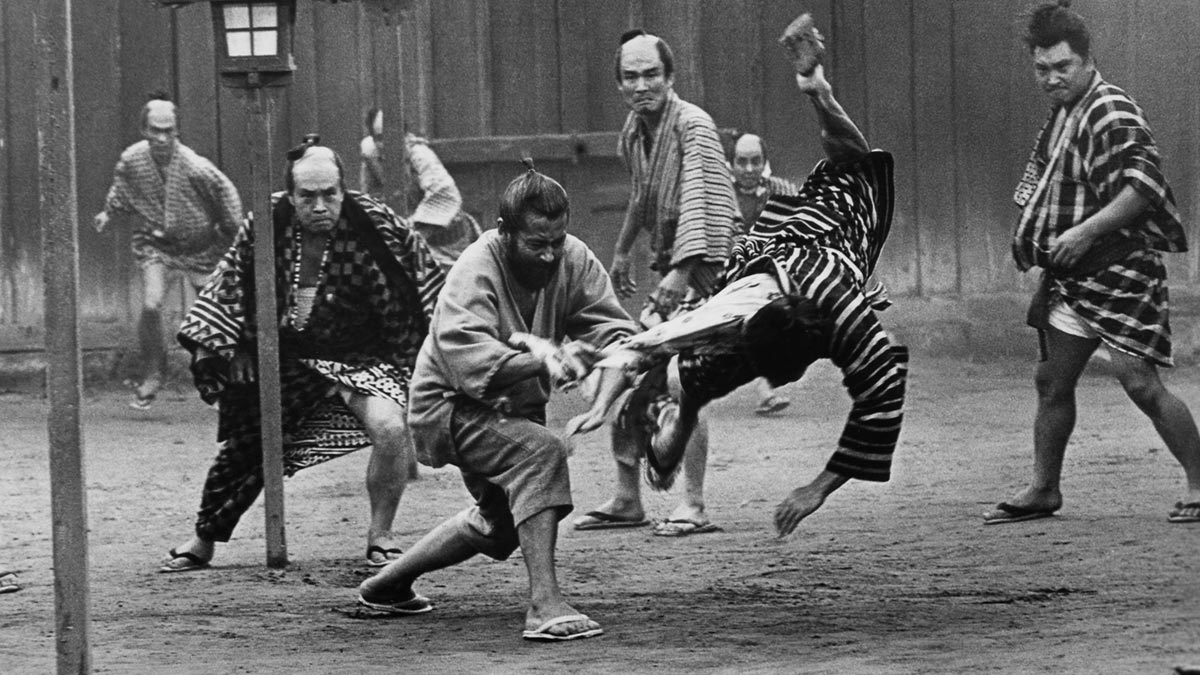
When he takes the young girl to the clinic, Red Beard assigns Noburo to nurse Otoyo back to health. The film yet again plays with plotting and dramatic structure as it begins to develop itself around entries in Noboru’s journal. He writes about his slow journey to cure Otoyo. Every attempt to check her health or to be given medicine is refused as she either slips away or flicks medicine away from her face. Right when Noboru is ready to give up, Red Beard enters and attempts to give her medicine. In one of the film’s most beautiful long takes, Red Beard fills a spoonful of medicine and tries to give it to Otoyo. She slaps the spoon in his hand and splashes the medicine all over Red Beard’s bearded face. He nods his head, “hmms” to himself and tries again. She slaps it again. Mifune repeats. The moment suddenly transitions from tense to comic as Red Beard gets splashed again and again. Mifune changes from a figure of seriousness and becomes a lovable, bearded father figure. Even Otoyo catches herself laughing to the point that she’s finally comfortable enough to take the medicine from the spoon. Noburo learns how patience and a love for people are necessary if you want to be a doctor.
In the film’s final moments, Yasujiro Ozu’s avatar and regular star, Chishu Ryu, appears as Noboru’s father during his son’s wedding. As he and Red Beard preside over the wedding, there’s a symbolic sense of one era of Japanese filmmaking transitioning to the next. As the two giants of the Japanese box office watch over the wedding as paternal figures, Noboru makes the announcement that he no longer wishes to assume the respected post as the shogun’s personal doctor. He feels his place is still at Red Beard’s clinic. Through this, he rejects a life of financial safety for something that can be more spiritually fulfilling. The last three-hours of emotional revelations among Noboru and his patients evolved him into a more sensitive and humbled man. Like so many of Kurosawa’s characters before him, it’s not nearly enough for his characters to change, but to go through a complete spiritual transformation that makes them different and better people.
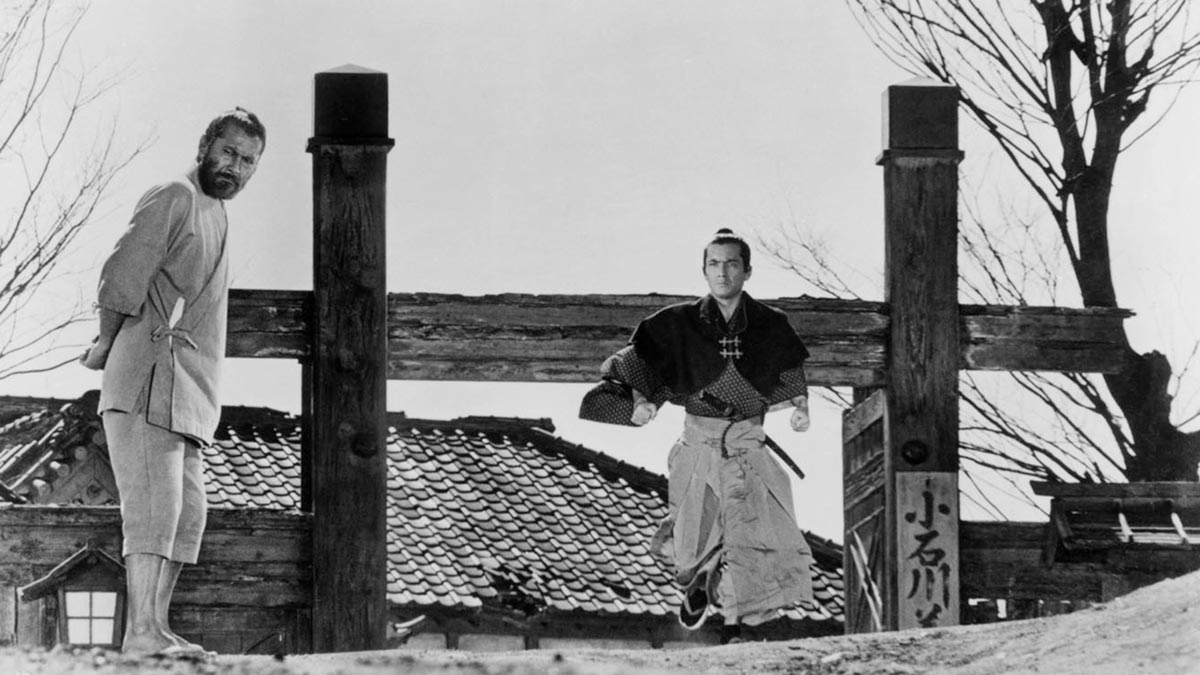
After Red Beard, the film industry Kurosawa helped cultivate and put on the international map drastically changed. Though Japan was at the peak of their post-war “miracle” economy, ticket sales were dropping substantially and the studios were hurting. They had no choice but to conform to the changing times brought on by television’s infiltration of the market. Toho would no longer finance films with budgets on par with Red Beard and opted for smaller, genre fare that could quickly make back their budget. Daiei Film would go completely bankrupt by 1971, and in that same year, Nikkatsu ceased production on their signature brand of action films and converted their studios to create lower budget, softcore “Roman Pornos”. Akira Kurosawa fell on even harder times as the production of his first American feature, Runaway Train, fell apart and the scenes he was to direct for the World War II epic, Tora! Tora! Tora!, were also cancelled. He would instead spend the next thirty-three years making only seven features that were funded by disparate sources including George Lucas, Steven Spielberg, and the Soviet Union.
Despite the major changes Kurosawa’s career would take, Red Beard was a massive box office success in Japan. Red Beard’s exhaustive three-hour journey is an epic that takes place in intimate rooms. Grand revelations and transformations happen to people in small, personal spaces on top of tatami mats in subdued, quiet moments that are underplayed by Masaru Sato’s childlike score. The victories that happen in Red Beard feel contrary to the grand scope of Kurosawa’s previous features with their grand gestures and spectacular deaths. As Japanese values and class structures felt like they were rapidly changing, the comforting simpler times and warm love for humanity of Red Beard certainly struck a nerve with Japanese audiences, despite being met with criticism and confusion in the west. Since then, it’s gone on to be considered one of Kurosawa’s key masterpieces and a pivotal film in an illustrious career.
Red Beard screens April 7 & 8.

